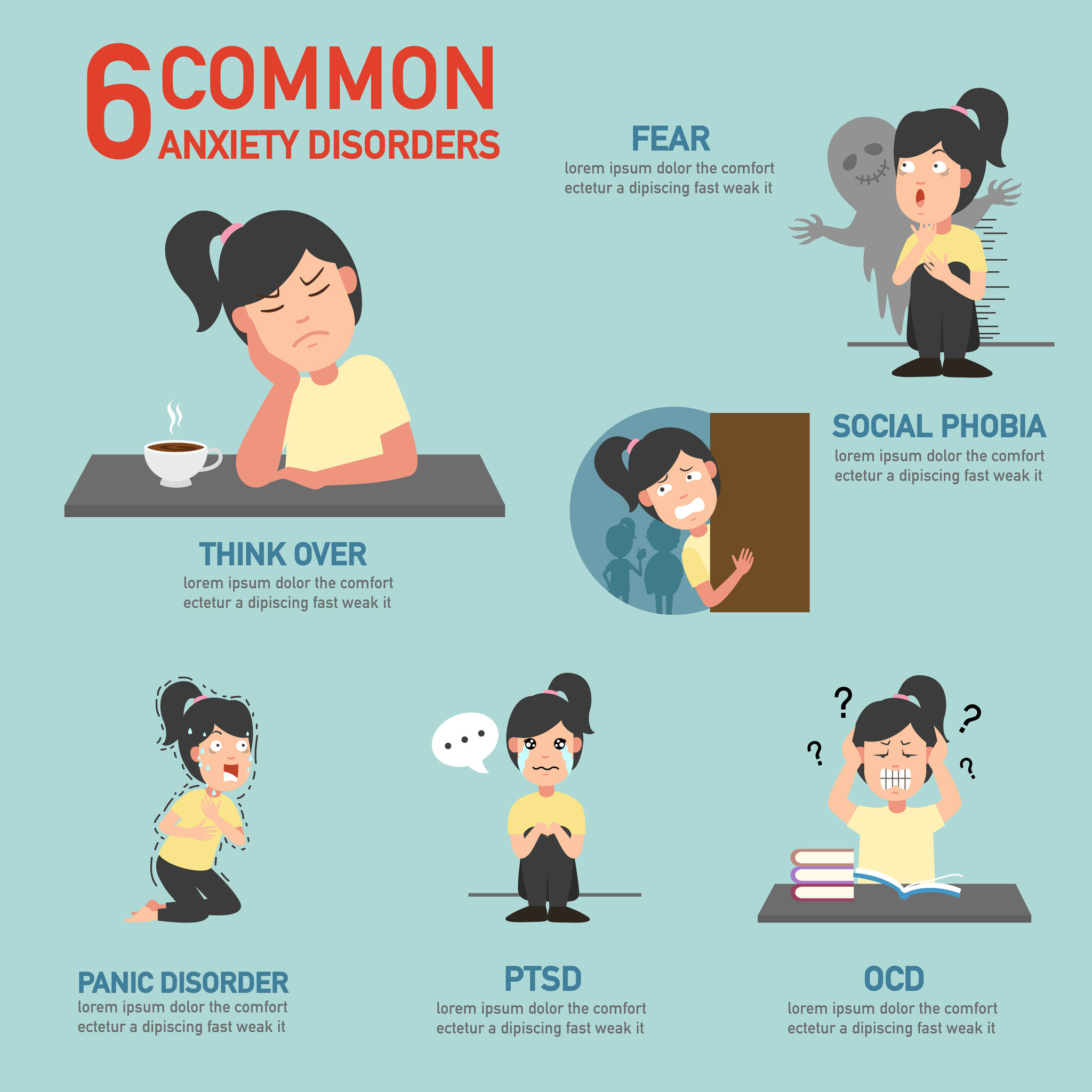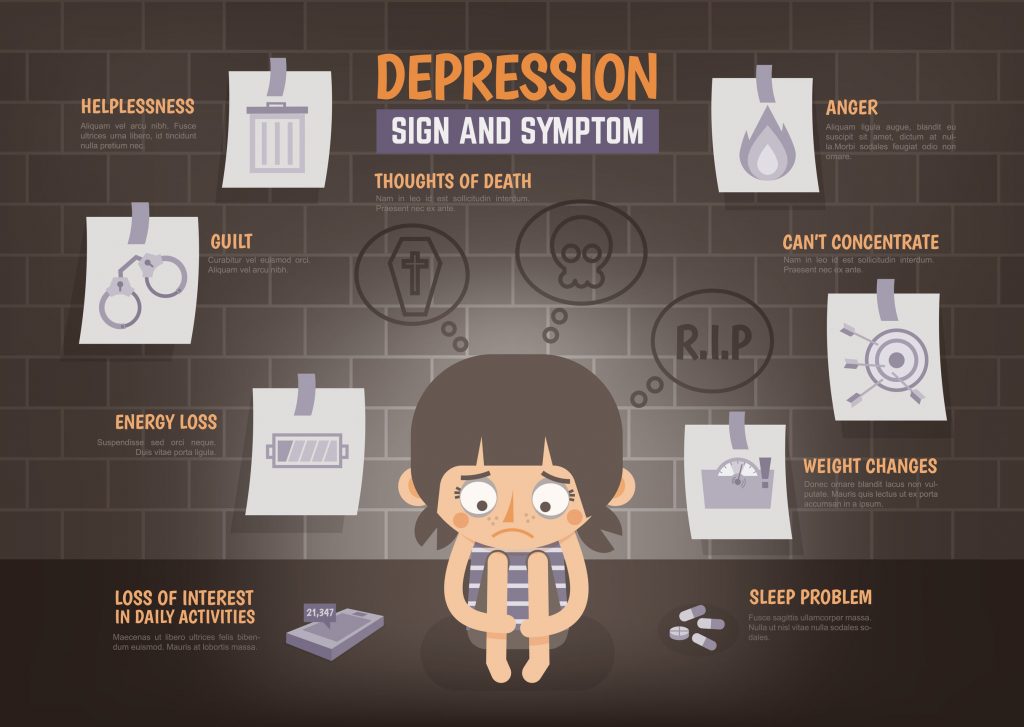Did you know that occupational therapy in mental health is one of the most effective treatments for mental illnesses? Due to a prevalence of mental health issues in teens, treatments such as cognitive behavioral therapy (CBT) can help young people overcome mental illnesses.
Occupational therapy is a rehabilitative therapy which focuses on helping patients who have difficulty performing daily tasks. This all-inclusive method that looks at the patient’s environmental, physical, and cognitive aspect of rehabilitation. Mental health occupational therapy has been proven to help teenagers manage their mental health problems. So, let’s take a closer look at how this can be done.
Occupational Therapy in Mental Health | A Guide to Mental Illness Treatment
Anxiety Disorders
Anxiety is a very common emotion. However, if your anxiety starts to inhibit your functioning in day-to-day life, you are suffering from an anxiety disorder. Mental Health America categorizes anxiety into six types of disorders. Panic disorders, generalized anxiety disorders, social anxiety disorders, obsessive-compulsive disorders (OCD), posttraumatic stress disorders (PTSD), and phobias are all types of anxiety disorders.
For example, patients suffering from anxiety disorders struggle with social participation, activities of daily living (ADL), and sleeping. Mental health occupational therapy works by involving patients in task-related activities that encourage them to engage in everyday settings. Occupational therapy helps patients identify the source of their anxiety and incorporate various strategies to manage it. This process involves regulating the patient’s emotions which trigger their anxiety. CBT is an example of how mental health occupational therapy can help patients re-engage in their daily routines.

Find occupational therapy jobs here!
Depression
The National Institute of Mental Health reports that about 2.3 million adolescents in the United States have had at least one major depressive episode. Those affected by depression lack energy and interest in daily activities and often disengage from social activities. There are multiple forms of depression such as major depressive disorder, dysthymia, adjustment disorder with depressed mood, seasonal affective disorder (SAD), bipolar disorder, and postpartum depression. Among teens, the most common forms of depression are adjustment disorder, dysthymia, bipolar disorder, and major depression, for instance.
Occupational therapists help patients overcome their depression by slowly reintroducing them to their normal lives. To achieve this, reflection on behavior and emotion is key to recovery. This way, patients can identify the source of their problem and find meaning within their lives again. Understanding the effects of depression on an individual’s behavior is crucial to helping them re-engage in daily activities. Encouraging social participation and providing a structure within treatment is also an important part of mental health occupational therapy.

Eating Disorders
The American Psychiatric Association defines eating disorders as “illnesses in which the people experience severe disturbances in their eating behaviors and related thoughts and emotions.” Eating disorders are categorized into three main types, which are anorexia nervosa, bulimia, and binge eating. Consequently, a person’s constant focus on food and weight can cause disturbances in their daily functioning.
In this case, the goal of occupational therapy is to help patients with eating disorders manage their condition and start to participate in normal activities again. For example, occupational therapists utilize sensory therapy and psychotherapy to help their patients reach this goal. Through therapy, patients are encouraged to adopt habits which create or reinforce healthy roles and occupations. As a result, these strategies can help patients overcome their beliefs and views on food and weight issues. The source of the patients’ behaviors is based on associations and perceptions that they have created of and by themselves. So, it is important for occupational therapists to help patients identify how their emotions are affecting their behaviors. After patients are made aware of their emotions, occupational therapists can employ various strategies to help their patients manage their lifestyle through cognitive behavioral therapy (CBT).
Do you have any questions about occupational therapy in mental health? Make sure you share them with us in the comments below!

January 23, 2019
I was very happy to read the article as an OT who’s passion lies in mental health.
Saddened by the diminishment of OT in the mental health world and my deep belief in the incredible role / service that OT has to offer – I was surprised to learn of AOTA endorsing CBT and SEL as ‘sanctioned’ approaches to be used by OTs….
I am 100% in agreement with the appropriateness of OT in mental health….yet paid positions in mental health are extremely scarce and so many psych professionals not only are unaware of the OT philosophy, but will state outright that this is ‘outside the scope of service…..OTs are not licensed to use these mental health approaches.’
I would love any info anyone could offer supporting the ‘sanctioning’ of OTs working with people who are trying to manage anxiety disorders.
February 11, 2019
Hi Wendy, I am a student looking for evidence of Occupational Therapists practicing (for pay!) in the field of mental health. Whilst this is prevalent in places like Australia, it sadly does not seem to be a realistic occupation for OT’s here. I also note that there has been no response so far to your post – I had hoped that it might elicit some feedback. Thank you for your comment though, it has helped substantiate my suspicion that OT’s in healthcare in the US is an abstract ideal at the moment.
August 6, 2020
I did my training for OT in the UK and work here now, where many OTs work in mental health, and they are often shocked when I tell them very few (less than 4% last time I checked) work in mental health.
I did a project on providing OT for people with bipolar disorder in the US and I think one of the main reasons OTs do not find paid work in mental health settings in the US is because medicare and medicaid do not pay for occupational therapy services except in very limited capacities in partial hospitalisation programmes only. And even then, it is only in very limited circumstances. Most private insurances will tend to follow medicare’s lead in terms of what they will and won’t cover with minor changes, so it makes sense that most healtcare facilities won’t even consider occupational therapy if they won’t get reimbursed for it.
December 8, 2020
Hello,
I’m a student working on a theoretical case. What are your thoughts on using CBT to treat borderline personality disorder? The client was homeless for a couple teen years. They experience depression, suicidal ideations and gestures. They have promiscuous sex with random partners, some of which have injured the client. They are frequently in inpatient psych and cant hold a job.